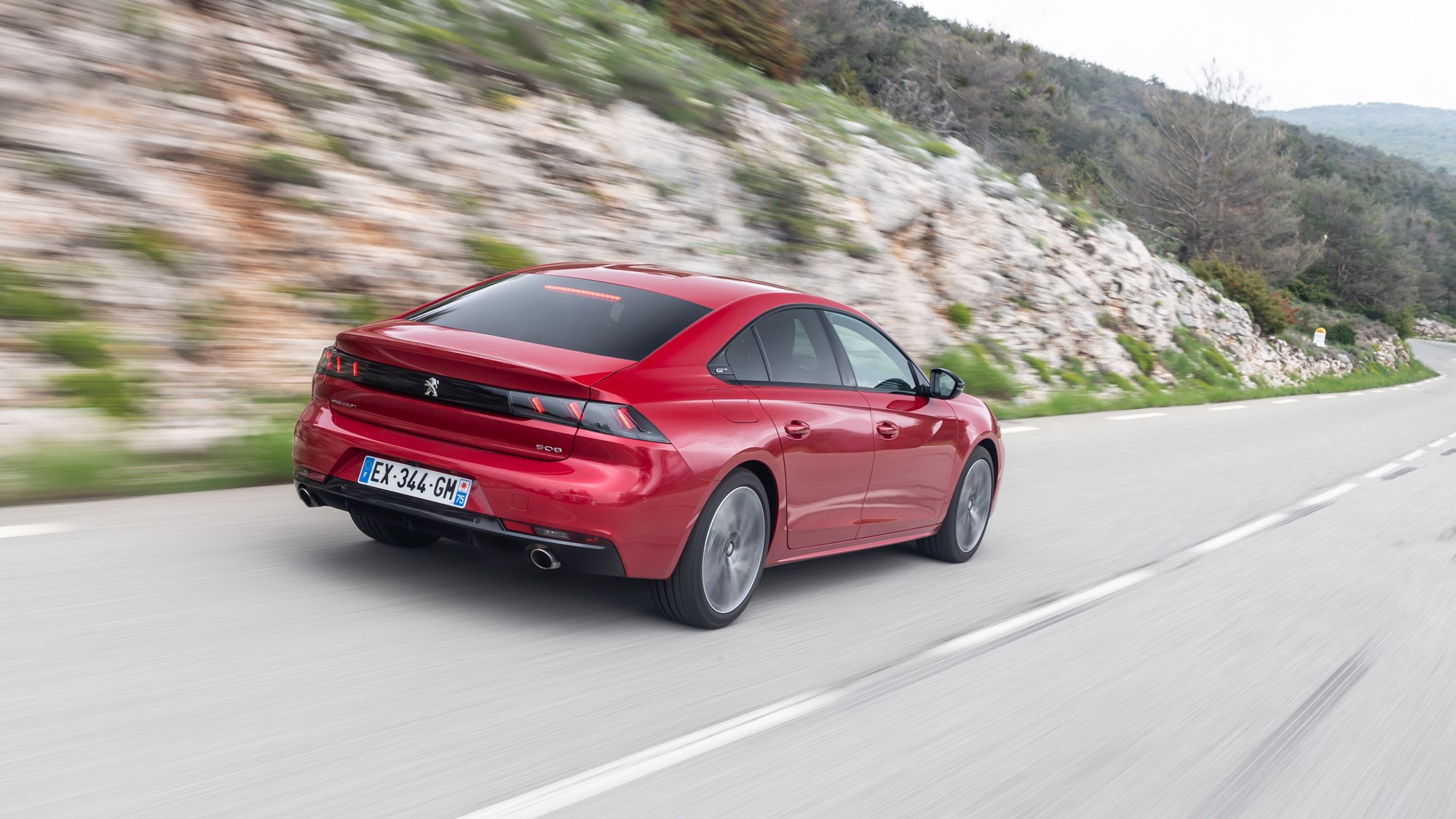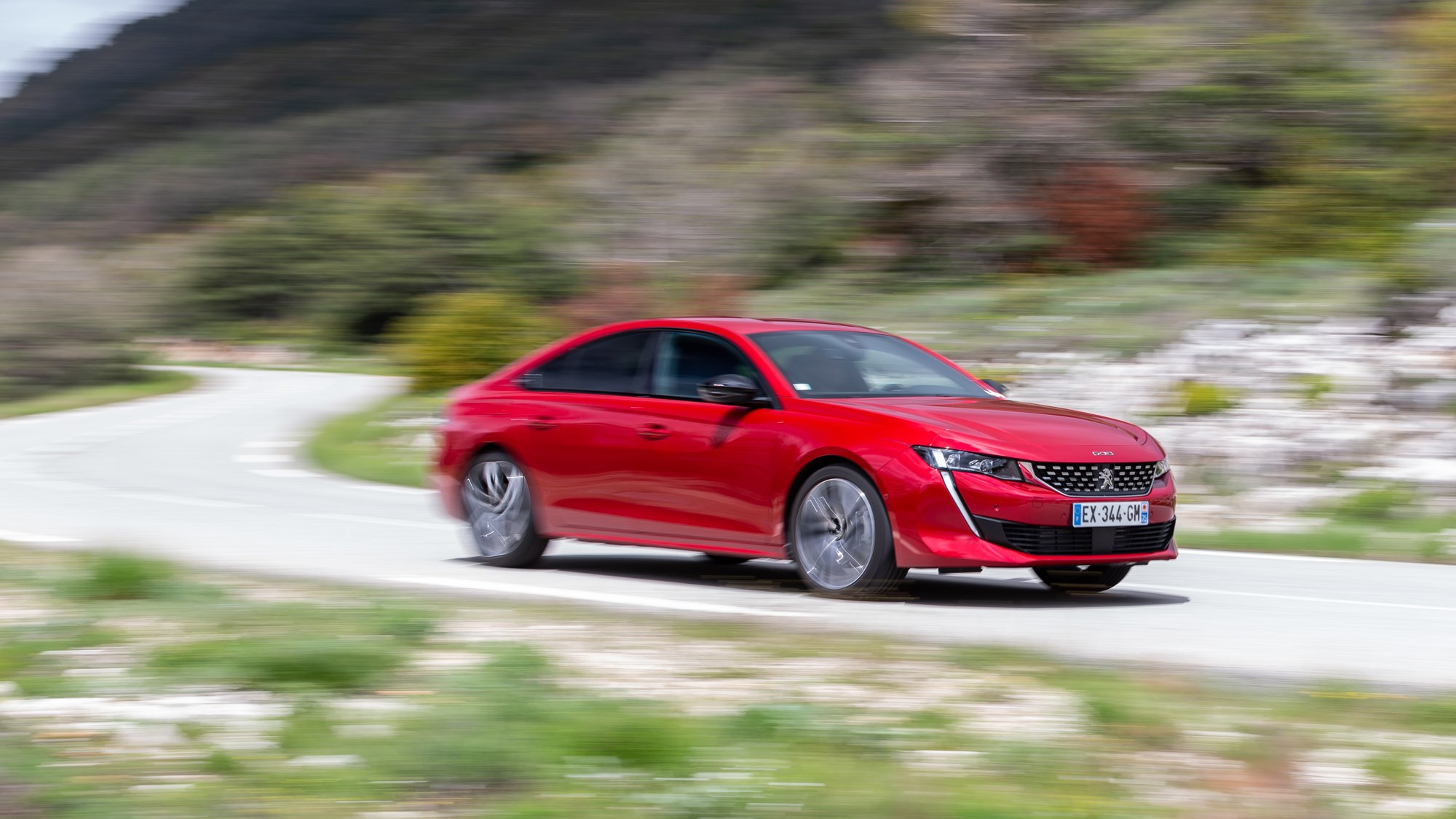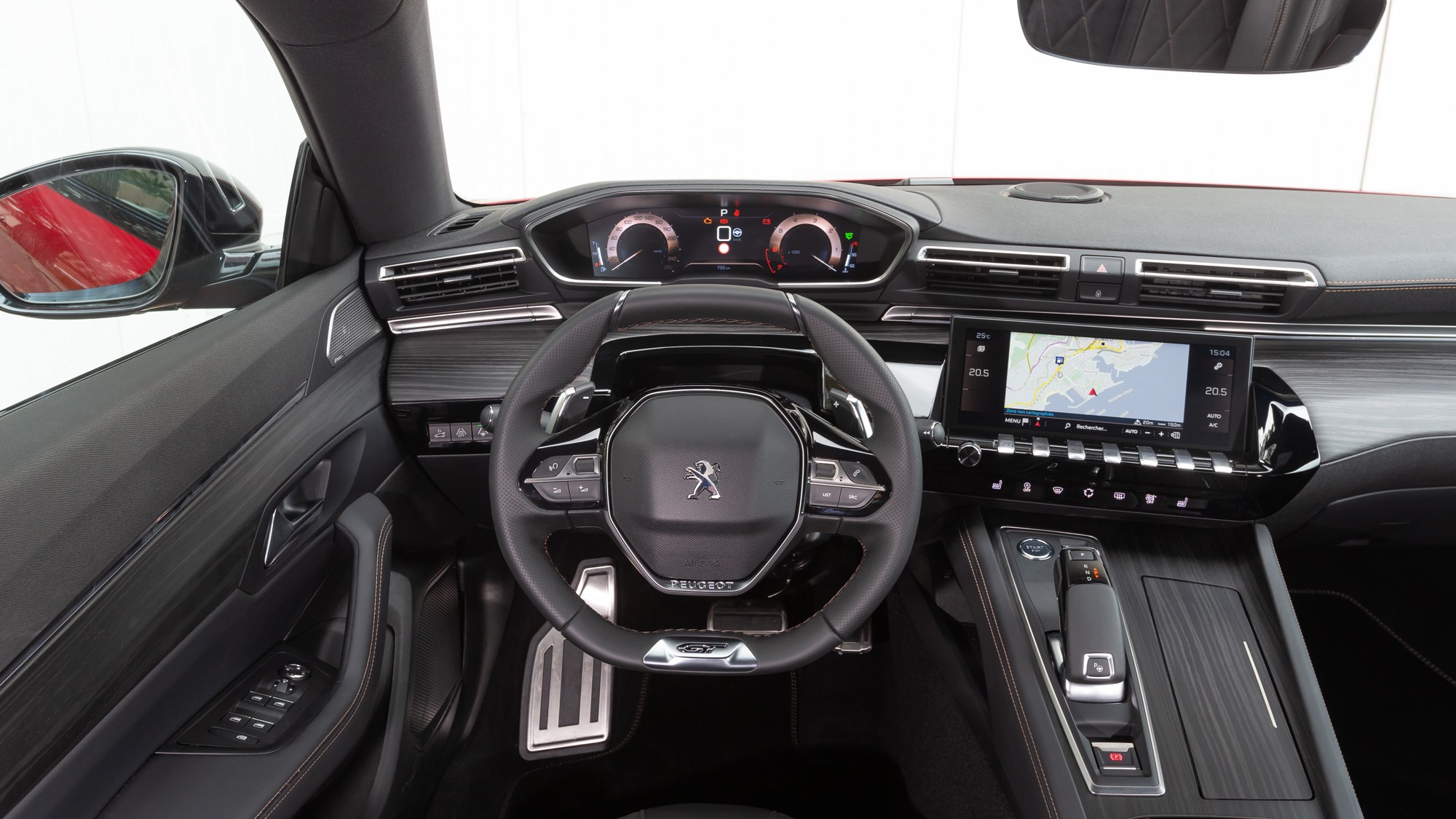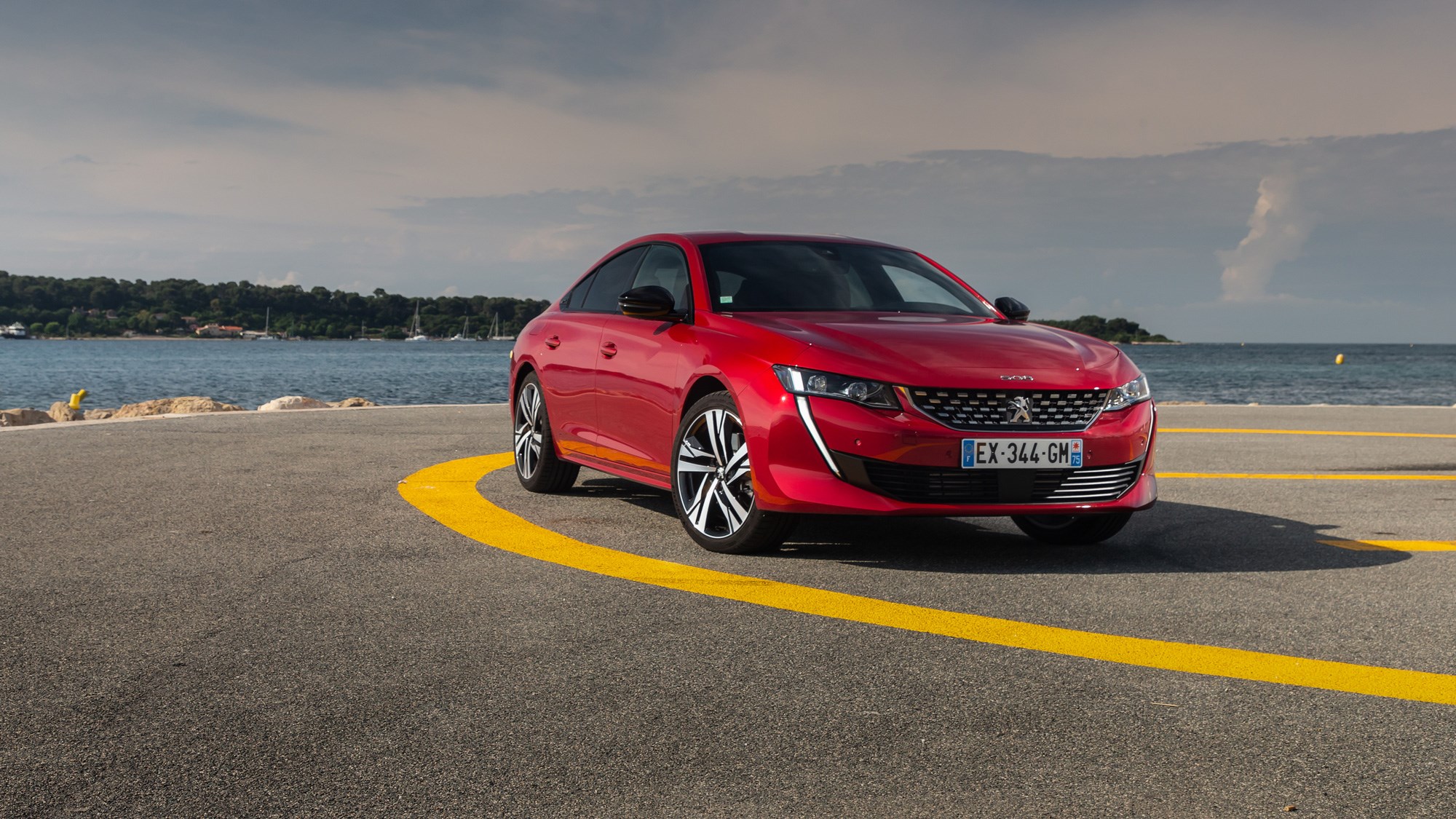► All-new Peugeot 508 driven
► Lighter, lower and wider
► UK prices from £26,000
What’s that definition of madness – to do the same unpromising thing over and over again and expect a different outcome? And lo, here comes the new flagship Peugeot 508. The French car maker sold but a few hundred 508s to UK customers last year. Hardly a surprise, given there couldn’t be a much less appetising formula to British car buyers than: big saloon + French badge + bland sub-Mercedes design + catastrophic cost of ownership = Peugeot 508.
Electric Peugeot’s: a CAR guide
But its all-new hatchback successor is a very different proposition indeed. With its chloroformed engines and pacified tyres, the 508 is a sweetly refined car in which to roll. Much reduced in size and with fastidiously light steering, the Peugeot conveys an easygoing, agile character, quite different to those determinedly sporty German rivals.

Then there’s the exterior design, mixing imposing proportions and splendid details, plus an interior that combines an unusual stepped dashboard with an impressive digital instrument cluster. Most fantastical of all, Peugeot’s UK boss will swear on his children’s lives that this 508 will have competitive lease rates, underwritten by painstakingly managed second-hand values. Now if that doesn’t make you want to read on to find out more, I don’t know what will.
Downsized but conventional under the skin
From the driver’s seat, you immediately notice the swept back windscreen, which melts into a sharply raked coupe-like roofline. The windows are frameless, mirroring the side glass of upmarket sports cars, which helps lower the roofline. All told, the 508 stands 60mm lower than its predecessor, and is 80mm shorter overall: that’s some serious pruning. It’s also fractionally wider and the bonnet is lengthened, all of which unite to create wedgy, stocky and handsome proportions.
Under the skin is PSA Groupe’s EMP2 platform, shared with the 5008 and DS7 SUVs among others. That means front-wheel drive, a body suspended by MacPherson struts up front and a multi-link rear axle, and four-cylinder 1.6- petrol and 1.5- and 2.0-litre diesel engines at launch. The engines are typically mated to an eight-speed automatic transmission, though you can specify a six-speed manual on the base 1.5-litre diesel.
Testing the base diesel on passive dampers
With 130bhp, that turbocharged compression ignition unit may sound a little out of its depth. But it kicks out 221lb ft at 1750rpm, and the 508 is a light car: around 70kg less paunchy than its predecessor. It musters sufficient punch and the engine revs out smoothly though with occasional vibration through the steering, with noise extremely well muffled. The 0-62mph benchmark passes in 9.9secs, but in truth it feels adequate rather than sluggish.
This 508 has traded up to 18-inch rims and employs conventional springs and dampers; active suspension is widely available and standard on all petrol models in the UK. The standard set-up controls body movements well, and the long-legged ride is particularly comfortable at motorway speeds. The going gets a little bouncier and more brittle over bumps around town, but it’s up there with the best in class.

And rolling refinement is exceptional. The Michelin Pilot Sport 4 tyre makes barely a grumble on these largely smooth south of France roads. Despite the lack of window frames, wind noise only occasionally whistles its presence alongside. Throw in well-damped engine noise, and you have an impressively refined car.
Steering feel is as distant as road roar. The rack’s meringue lightness is conveyed as you whizz from lock to lock, making the car wieldy to manoeuvre, aided by a steering wheel that’s shaped like a 50 pence piece and about the same size. That’s a staple ingredient in Peugeot’s i-Cockpits.
I didn’t gel with it, wanting more heft and directness off the dead ahead, until resistance intensifies once you reach motorway speeds. But I can see what Peugeot’s trying to do, create an easygoing car to pilot that feels rather different to those muscular Germans, and that will resonate with some customers. And the ride/handling balance is good. The 508 stays flat in corners, holding its line well thanks to plenty of grip. It’s a lot more fun to chuck into bends than its SUV siblings, naturally.
Busy eight-speed ‘box and adaptive damping: driving the petrol
Opt for spark ignition and it’s a 1.6-litre turbocharged engine, available with 180 or 225bhp. The engine whirrs away with little charisma, but like the diesel its soundtrack is low down in the mix, and pulls sufficiently hard for 0-62mph in 7.9secs.
The eight-speed auto responds snappily to kick down, but it can try too hard to please, with gradients and gentle throttle inputs making it keep shuffling the cogs like an edgy poker ace mired in a losing streak. Put it in Sport mode and it becomes even more hyperactive and hangs onto a gear a shade too long.
The adaptive dampers summon up four driver modes: Eco, Comfort, Normal and Sport. The softest setting makes the prow bob up and down excessively, normal wafts along with improved control, and although the ride doesn’t go to pieces in sport, the dampers can’t be decoupled from the busy transmission map. Personally I’d stick with the passive set-up and either of the diesels, whose carbon dioxide emissions range from 98g/km for the 1.5 auto to 124g/km for the 2.0 on 18-inch wheels.

The 508’s trump card: its digital cockpit
Slide into the supportive driver’s seat, which you can drop nice and low, and revel in the i-Cockpit. The dashboard is segmented in two, with the vents mounted high in the top section, while the lower part – finished in carbonfibre effect trim or tasteful wood – juts out like a shelf. It’s a bit like sitting at a rolltop desk, and so much more welcoming than the typical cliff-face design. Blue LED strips form ice-cool highlights in the dark, and ring the cupholders too.
Mounted in front of you are Luke Skywalker’s digitised binoculars, housing the instrument panel with five different displays. My favourites are Navigation which conjures a 3D map of your environment, and Dials to render digital tacho and speedo. The central touchscreen can be upgraded to 10-inches in diameter, and a welcome new development is shortcuts to the air-con temperature either side of the map. This can be a bit slow to respond to pinch and zoom requests mind you.
Peugeot may have trimmed the wheelbase to help shrink the car, but there’s sufficient kneeroom in the back for two 6-footers sitting in line, though the driver will have to raise his ride height to allow feet beneath the seat. There’s an inch or so of headroom too, but with the swooping roofline narrowing the glasshouse, some back benchers may feel a tad claustrophobic. The hatchback tailgate opens to reveal a nice wide load bay, which stows 487 litres of cargo.
Peugeot 508: verdict
The Peugeot 508 goes on sale in July 2018, with deliveries commencing in October. Prices range from £25,000 for the 1.5 diesel to £36,400 for the top-spec GT 2.0-litre. But it’s all about the monthly lease rates, which Peugeot vows will be competitive with its benchmarks, the Audi A5 Sportback and Volkswagen’s Arteon. UK managing director David Peel promises the new car won’t be forced onto rental car fleets or firesold by retailers: he’s even buying back every dealer demonstrator to ensure an orderly disposal to protect residual values, and underwrite those monthly leases.

That’s an approach he’s blooded with the 3008 and 5008 SUV – admittedly hotter prospects than an executive car – whose residual values actually increased between launch and January 2018 by 10 percentage points. And not having to claw back the depreciation, and potentially land the user in negative equity, might make the 508 less of a lost cause at retail.
After all, it’s pretty well-equipped: base Active trim has navigation, Apple CarPlay, lane keep assist and automated emergency braking as standard. Allure, from £26,300, adds the digital cockpit, keyless entry, blindspot detection and sportier bumpers. But, visually, it’s essential to upgrade to GT Line (from £28,050) or the flagship GT trim (from £35,970) to get those fabulous sabre-toothed daytime running lights, the sparkling grille like Blofeld’s outer space laser in Diamonds are Forever and the gloss black window surround and mirror caps.
To these eyes, the 508 GT is the best-looking front-wheel drive executive car from any mainstream car maker, or ‘high-end generalist brand’ as Peugeot defines itself. It has a likeable, easygoing character, with a decent ride/handling balance and compelling civility. And the digitised cockpit is a knockout. If the company delivers 5000 cars a year in the UK, it’ll be delighted – and some comeback. And if you see someone driving one, it’s not a sign of madness or desperation, but perhaps a discerning iconoclast.
Browse more of our Peugeot reviews